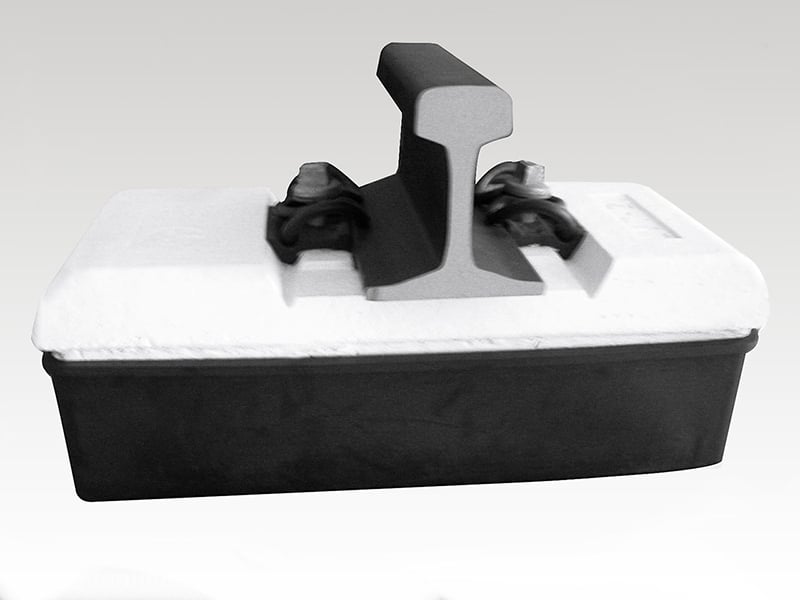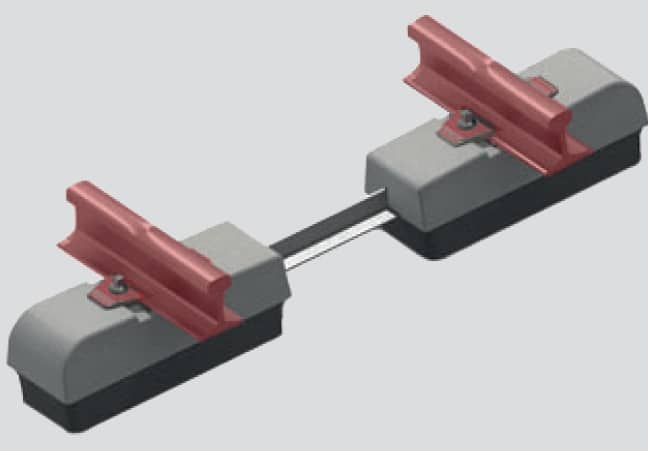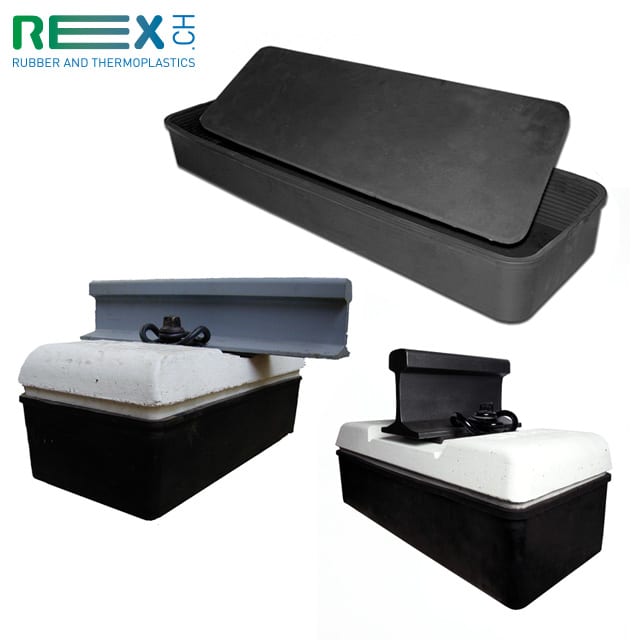Ballastless Tracks – Product Overview
In Switzerland the first ballastless track built with Borflex Rex SA rubber products dates back to 1978. Ever since then, this sector has experienced a fast development both in Switzerland and abroad and this has led to the optimisation and search for several new solutions and applications. Borflex Rex SA has taken part in the implementation of several projects for the Swiss Federal Railroads and abroad. The application of elastic boots, combined with special microcellular rubber pads featuring special static and dynamic characteristics, has made this system a success for applications in and outside tunnels. Several projects have been carried out in the sector of high speed-, underground- and urban tramway-tracks.
Click here to go back to the Rail Infrastructure Product Overview.
Rubber Boots for Biblock Sleeper Tracks without Connection Bar | Ballastless Tracks

Biblock sleepers without connection bars of the LVT type have been used in the projects pertaining to the new transversal line crossing the Alps (Zimmerberg, Lötschberg and Gotthard). This system is widely used abroad (The Channel Tunnel, Hong Kong, Taiwan, Brazil and the USA).
Rubber Boots for Biblock Sleeper Tracks with Connection Bar | Ballastless Tracks

Rubber boots and pads have been initially developed for biblock sleepers with connection bar and have been used in several Swiss tunnel constructions such as Bötzberg, Grauholz, Mattestetten-Rothrist and in different railway stations: Zürich, Kloten and Lausanne. REX elements were inserted in the project of different metro lines abroad: Brazil, Egypt, Greece, France and Italy.
Underground and Tramway Tracks | Ballastless Tracks

Having different possible applications in the field of the railtracks for undergrounds and tramways, Borflex Rex SA produces boots and the microcellular pads with a static and dynamic stiffness that are remarkably interesting. Vibration damping may either occur through the application of special rubber pads or by employing special profiles, optimised by means of simulation, which the company can execute in its own laboratories.


